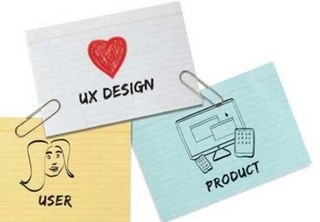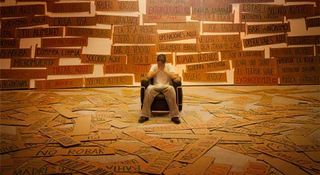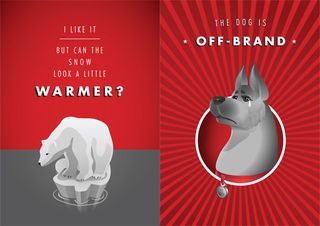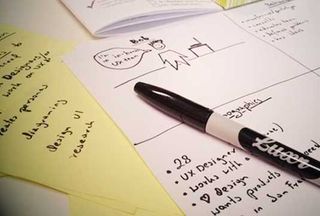10 pro tips for creatively leading a design project
The same fundamental principles lie behind the success of every project. Abbie Walsh of design consultancy Fjord reveals what they are and how to put them into practice.
Whatever your design discipline and whatever the size of your company, there are certain fundamentals that apply to creatively leading a design project. Here is a snapshot of a set of evolving principles I have been developing in conjunction with my team at Fjord. Follow them, internalise them, keep checking back to see whether you're fulfilling them - and you shouldn't go far wrong...
- Looking for a new career challenge? Check out our jobs board!
01. Remember the user

Understanding the people we are designing for is the bedrock of what we do - but is easier said than done. In-depth research may or may not be practical, but at the minimum, make sure you have a conversation with the people you are hoping will use the service you’re designing, and remember what you've learned from them when making design decisions. Keeping a set of personas or user needs up on the wall at all times can be a helpful physical reminder.
02. Fully understand the scope
When you're given a project brief by a client, that's the start of the process of understanding what they want and need - not the end. Don’t stop asking questions of your client, their stakeholders, and yourselves until you’re absolutely clear about what you’re designing and why.
03. Exhaust all design options

When deciding how best to fulfil the client's brief, don't just go for your first idea. Brainstorm as many directions as possible, explore every crevice, turn the problem upside-down and inside-out, until either something sticks or falls by the wayside.
04. Know the constraints, but think bigger
Every design project will have a set of constraints. The key to being able to create brilliant designs within these is to be completely familiar with them, and at the same time allow design directions to go beyond them before being pinned down to one solution.
05. Define your criteria upfront

Establishing a baseline set of principles, needs and requirements, and getting them signed off by your client and stakeholders, is vital.
You'll certainly be glad you put in the time once your design starts to take form. Views of a design are often very subjective and personal ("I don't like the green, can you try making it yellow?"). But if you can refer to a signed-off set of design principles that everyone agrees to ("that green is part of the brand colours we agreed stick to"), it's far easier to move forward together productively.
Get the Creative Bloq Newsletter
Daily design news, reviews, how-tos and more, as picked by the editors.
06. Get peer input regularly
Swallow your pride and invite criticism as often as you can without disrupting your workflow. Make sure you design regular critique sessions into your project plan and that feedback is taken on board, even if that means rethinking the design. Quality should always win out against personal opinion.
07. See the bigger picture - and the pieces

The key to great creative leadership is the ability to switch seamlessly between the detail of a design project and its overarching direction at the same time. In doing so, a leader should be able to make the necessary direction changes at the detail level whilst maintaining the design vision.
08. Be informed and stay flexible
Be able to push back on client feedback based on agreed criteria (as above), but know when it’s time to flex and make changes based on client or peer feedback.
09. Be prepared

Be prepared for every meeting, whether it's with the client or just you and your team. From major review sessions to the daily stand ups, always make sure you know what the agenda is and what you want the outcome to be. Pre-empt questions and keep on top of the subject matter. The client has hired you because you’re the expert, and likewise your team expects you to know your potatoes!
10. Be positive in public
Always be positive in front of the client and your team. This should go without saying, but is often not easy to achieve in practice. Some techniques in stress management - both for yourself and your team - can often go a long way.
Words: Abbie Walsh
Abbie Walsh is service design director and deputy managing director at the leading service design consultancy, Fjord
Like this? Don't forget to check out:
- 2013's essential design events
- FREE creative business card templates
- The Golden Ratio: a designer's guide
What would you add to Abbie's list? Let us know in the comments below!

Thank you for reading 5 articles this month* Join now for unlimited access
Enjoy your first month for just £1 / $1 / €1
*Read 5 free articles per month without a subscription

Join now for unlimited access
Try first month for just £1 / $1 / €1
The Creative Bloq team is made up of a group of design fans, and has changed and evolved since Creative Bloq began back in 2012. The current website team consists of eight full-time members of staff: Editor Georgia Coggan, Deputy Editor Rosie Hilder, Ecommerce Editor Beren Neale, Senior News Editor Daniel Piper, Editor, Digital Art and 3D Ian Dean, Tech Reviews Editor Erlingur Einarsson, Ecommerce Writer Beth Nicholls and Staff Writer Natalie Fear, as well as a roster of freelancers from around the world. The ImagineFX magazine team also pitch in, ensuring that content from leading digital art publication ImagineFX is represented on Creative Bloq.
